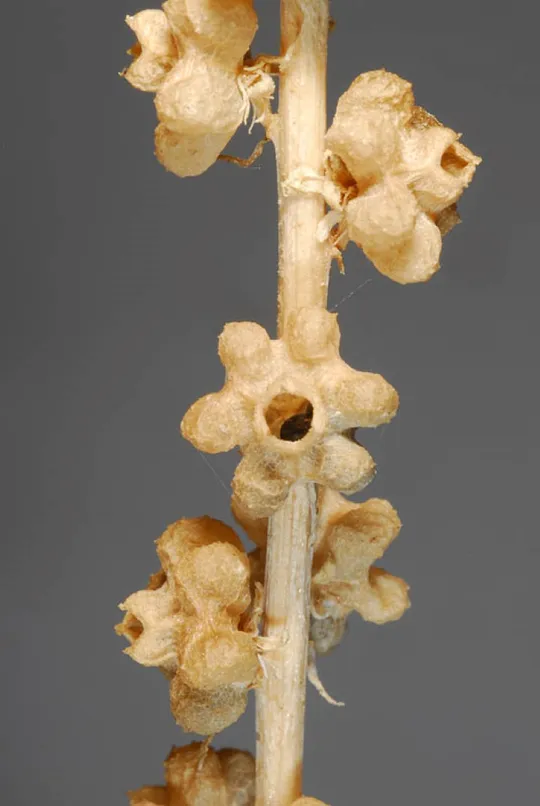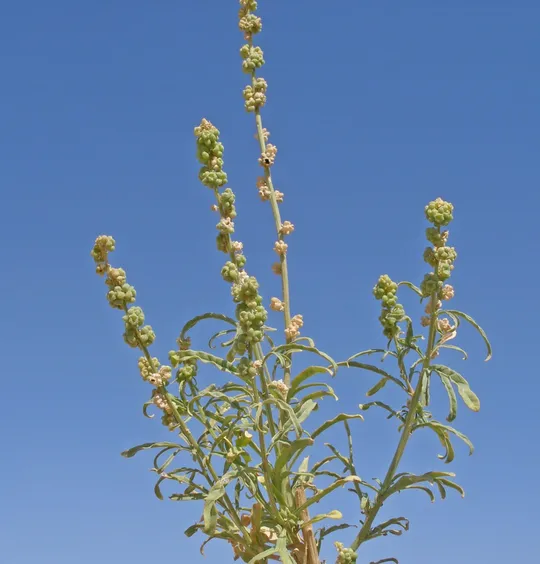Fat Mignonette
Reseda globulosa




R. globulosa is currently
known from the Judean Mountains and from the Shfela. There are two documented
sites, although there may actually be three. In the Judean Mountains it grows at
one site in Ras Bir al-Eid near Mitspe Yair in the Ma’on region (Oz Golan,
2006). It was previously collected by M. Zohary at another unknown site in the
Judean Mountains. Mimi Ron found R. globulosa in the Shfela north of the Mitspe Masu'a in 2006. There are collections
in the Jerusalem Herbarium from the area of Shoval in the Northern Negev from
1950 and 1961; it has not been reported in recent years and is now probably
extinct there. In the literature (Flora Palaestina) it is noted from the Golan
Heights, but there is no evidence of this.
Fallow fields
and arid transition zone scrublands.
The genus Reseda
has about 60 species found in the Mediterranean Basin, eastwards to central
Asia along the Irano-Turanian region and southwards in Africa, mainly in arid
areas. R. globulosa
is noticeably different from all other Reseda species in Israel in its
fruit that is not an elongated capsule as in other Reseda species
(Abdallah, 1978), but is somewhat similar to the fruit of Caylusea hexagyna
which has six almost separate cells. Caylusea
is also characterized by a flower that has six stigmas, unlike 3-4 in Reseda.
In Israel there are 11 species of Reseda most of them common and easily
identified. R. luteola is a fairly rare plant that
has a disjunct distribution in Israel and appears in herbaceous communities: on
basalt soils on the Golan and on loess plains and hills in the northern Negev. The
source of some of these populations is probably from agricultural cultivation
of the species for the production of dyes.
·
Reseda globulosa is an extremely rare plant that once grew in three regions and now
apparently grows only in two – the Judean Mountains and the Judean Plain.
The number of sites decreased: there were formerly four sites and currently there
are only two with certainty.
·
The small
populations at both sites face a demographic threat due to the small number of plants.
The transition from traditional to intensive agriculture and the conversion of
fallow uncultivated land to agriculture could possibly destroy the natural
habitat of R. globulosa.
·
There is a lack
of information on the global threat status of R. globulosa;
nevertheless the plant is not found in the red plant lists of neighboring
countries. It is considered an endangered species in Armenia, where it is known
from one site in the south of the country (Gabrielian et al, 1990). In this red
book this is the most serious state prior to extinction.
Fallow fields in
the transition zone scrublands in the southeastern Judean Mountains, the Shfela
and the northern Negev should be intensively surveyed, in order
to locate additional Reseda globulosa populations
that were not identified due to insufficient coverage of the surveyed areas.
Reseda globulosa has a disjunct distribution
in the Middle East and Trans-Caucasus. It is found in Israel, Jordan (Moab),
Armenia and Azerbaijan.
Reseda globulosa is annual plant
of fallow fields in the transition zone scrubland. It is extremely rare in
Israel and found now in fact, at only two sites in the Judean Mountains and the
Shfela. In the past it was also collected in the northern Negev, but is apparently
extinct there. Search efforts should be increased in these areas to verify the
endangered status of the plant.
Abdallah, M.S, & De Wit, H.C.D. 1978. The Resedaceae – a Taxonomical Revision of the Family. Mededelingen Landbouwhogeschool, Wagenningen, Holland. Pp. 218-220.
Current Occupancy Map
| 1000 squre meter pixel | 5000 squre meter pixel | 10000 squre meter pixel | |
|---|---|---|---|
| number of observations | 0 | 0 | 0 |
| in total pixels | 0 | 0 | 0 |
| Family | Resedaceae |
| Classification | On the endangered species list |
| Ecosystem | Semi Steppe Belt |
| Chorotype | Western Irano-Turanian |
| Conservation Site | Mitspe Yair |
| Rarity |
1
5
6
|
|---|---|
| Vulnerability |
0
1
4
|
| Attractiveness |
0
0
4
|
| Endemism |
0
0
4
|
| Red number |
1
4.2
10
|
| Peripherality | N |
| IUCN category | DD EW EX LC CR EN VU NT |
| Threat Definition according to the red book | Endangered |
 Based on:
Based on:






